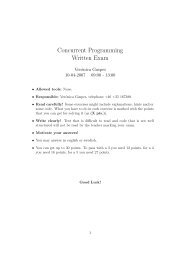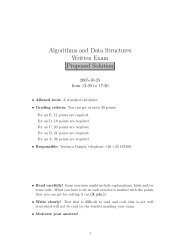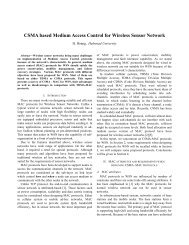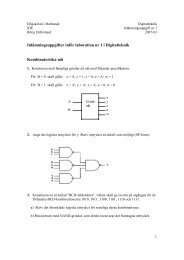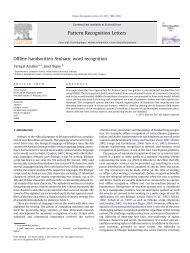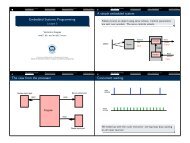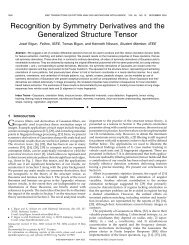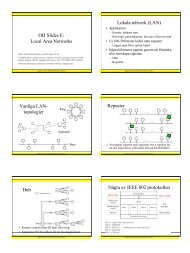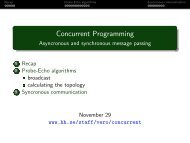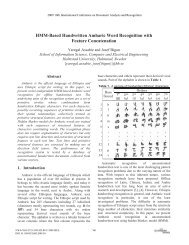Embedded Systems Programming Written Exam
Embedded Systems Programming Written Exam
Embedded Systems Programming Written Exam
You also want an ePaper? Increase the reach of your titles
YUMPU automatically turns print PDFs into web optimized ePapers that Google loves.
ecord a position<br />
int setPosition(Array *self, int x)<br />
// set the value at the recorded position to x<br />
int setElement(Array *self, int x)<br />
// return the value at the recorded position<br />
int getElement(Array *self, int x)<br />
5. (3 pts.) In laboration 4 you used a reactive object to implement a blinker<br />
that turns on and off a LED. The blinker can be started, stopped and<br />
the period can be set. Assuming that you have a class for reactive LEDs,<br />
implement a blinker. The blinker should not be hard-coupled to a LED,<br />
instead, it should be possible to instantiate blinkers for different LEDs.<br />
6. Say that three periodic tasks A, B and C have periods 20, 30, 40 (and<br />
deadline equal to the period).<br />
(a) (1 pts.) What does it mean that A has utilization 50%, B has utilization<br />
25% and C 10%?<br />
(b) (1 pts.) Given these utilizations, what is the total utilization?<br />
(c) (2 pts.) Provide the timelines that result from scheduling according<br />
to rate monotonic (RM) and according to earliest deadline first (EDF).<br />
4



